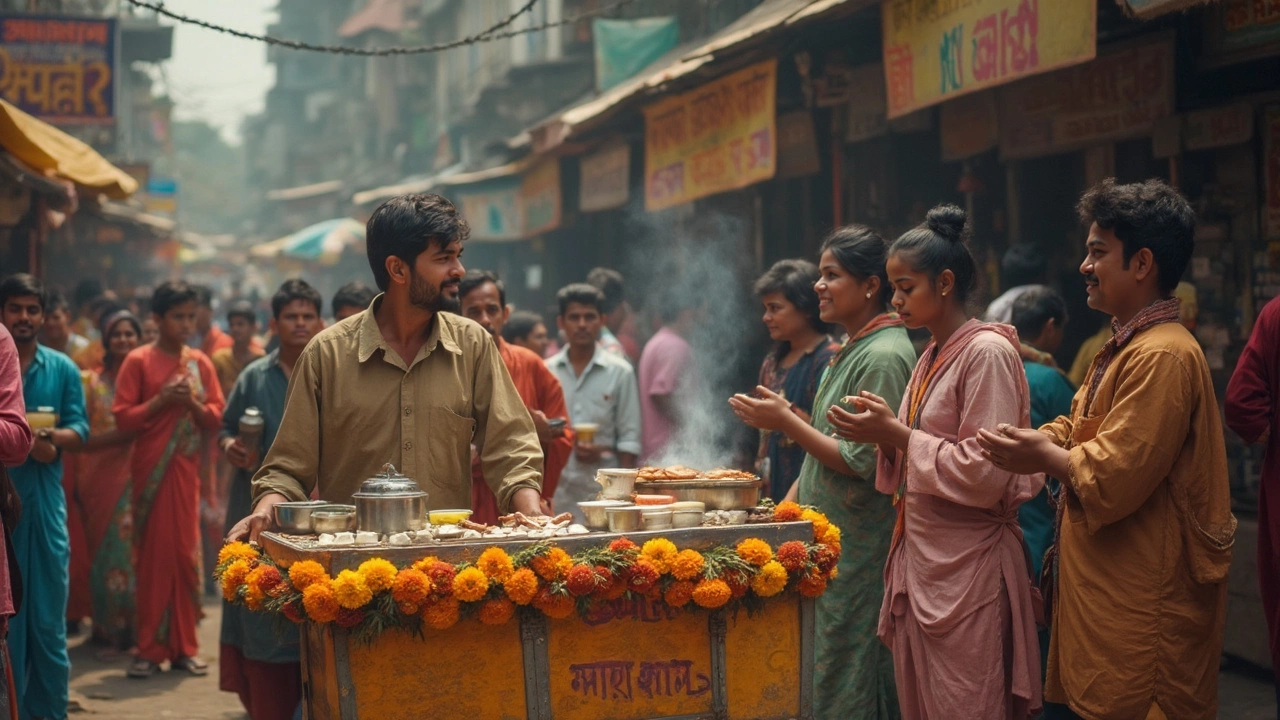Indian Street Food Prices: What You Really Pay Across Cities
When you think of Indian street food, affordable, flavorful meals sold by vendors on sidewalks, markets, and busy corners across India. Also known as roadside eats, it's not just food—it's culture, speed, and local life served on disposable plates. You might hear stories of meals for under a dollar, but prices vary wildly depending on where you are, who’s selling, and what you’re eating. This isn’t about fancy restaurants or tourist menus. This is about the real, everyday bites that locals line up for—and what you’ll actually pay for them.
Take Mumbai, a city where street food is a daily ritual, not a tourist attraction. Also known as Bombay, it’s where you’ll pay ₹25–40 for a vada pav, ₹50–70 for a plate of pav bhaji, and ₹30–60 for a glass of fresh sugarcane juice. These aren’t inflated prices for foreigners—they’re what Mumbaikars pay too. In Delhi, a hub of North Indian flavors and crowded bazaars. Also known as the national capital, you’ll spend ₹30–50 for a paneer tikka wrap, ₹40–70 for chole bhature, and ₹20–35 for a cup of jalebi. The difference? Delhi’s prices creep up near tourist zones like Chandni Chowk, but head to local neighborhoods like Lajpat Nagar and you’ll find the same food for half the cost.
And it’s not just about the city. In Kolkata, a city where tea stalls and puchka carts are as common as traffic lights. Also known as Calcutta, you’ll pay ₹15–25 for a plate of puchka (golgappa), ₹40–60 for a plate of jhal muri, and ₹20 for a hot cup of chai with biscuits. In Jaipur, a tourist magnet with deep-rooted Rajasthani flavors. Also known as the Pink City, you’ll pay ₹50–80 for a serving of dal baati churma, ₹30–50 for pyaaz kachori, and ₹40 for a glass of lassi. But here’s the catch: vendors near Amber Fort or City Palace charge 2–3x more than those in Sanganer or Malviya Nagar.
What drives these price jumps? Location matters more than the dish. A samosa in a quiet neighborhood in Bangalore might cost ₹15. The same samosa outside a metro station? ₹30. A bowl of poha in Pune’s residential area? ₹25. Near Shaniwar Wada? ₹50. It’s not about ingredients—it’s about foot traffic and perceived tourist demand. The smart traveler knows: walk two blocks away from the landmark, follow the locals, and ask for the "regular" price. Most vendors will lower it if you’re not clearly a foreigner.
And yes, safety matters too. You can eat street food without getting sick—just avoid ice in drinks, watch how food is stored, and pick stalls with a steady flow of locals. The best vendors don’t need signs or fancy packaging—they need a queue. That’s your real price indicator.
Below, you’ll find real guides on where to eat safely, what to avoid, and how to stretch your budget without missing out on India’s most delicious experiences. No fluff. No hype. Just what you need to eat well, cheaply, and confidently across the country.
